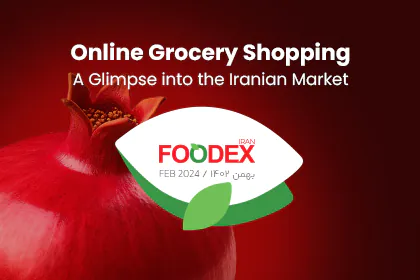Who does not need food and does not enjoy various delicious foods? In addition to being one of the human needs, food has become a tourist attraction today. Every country has its own special and unique foods and drinks. Cooking methods even change from city to city. Cooking competitions and events all over the world have made culinary tourism or food tourism the world industry of entertainment.
Local food is a cultural phenomenon highlighted through culinary tourism, competitions, and events. Its significance has grown with the emergence of culinary tourism as an academic field, like at Cordon Bleu in France.
What are we looking for in a Culinary tourism experience?
Let’s experience all kinds of cooking methods: There are so many different and attractive ways of cooking and preparing food that even if you are not very fond of eating and eating too much, you will enjoy seeing how it is cooked. Many people watch food channels to watch different cooking methods. Even many groups study them.
Local food is a cultural phenomenon highlighted through culinary tourism, competitions, and events. Its significance has grown with the emergence of culinary tourism as an academic field, like at Cordon Bleu in France.
Importance of Food Tourism
Food tourism plays a vital role in showcasing the importance of culinary experiences worldwide. It allows travelers to immerse themselves in diverse food cultures, creating a deeper understanding and appreciation for different cuisines.
The significance of food tourism lies in its ability to promote cultural exchange and contribute to local economies through gastronomic exploration.
Types of Food Tourism History
The history of types of food tourism dates back centuries, encompassing various forms of culinary exploration. From gastronomic pilgrimages to regional food festivals and farm-to-table experiences, the evolution of food tourism has brought forth a range of immersive encounters for food enthusiasts. These diverse types oft food tourism highlight the rich heritage and flavors of different cultures, enticing travelers with unique culinary adventures.
Here are some popular food tourism examples in middle east:
- Dubai Food Festival (Dubai, United Arab Emirates): This annual festival showcases the diverse culinary landscape of Dubai, featuring a wide range of Middle Eastern and international cuisines. Visitors can enjoy food tastings, cooking demonstrations, and food-related events held throughout the city.
- Jordan Food Week (Amman, Jordan): This week-long event celebrates Jordanian cuisine and culinary traditions. It brings together local chefs, food vendors, and farmers to showcase the country’s rich flavors and ingredients. Visitors can explore traditional Jordanian dishes and learn about the cultural significance of food in Jordan.
- Riyadh Season (Riyadh, Saudi Arabia): As part of the larger Riyadh Season event, this festival highlights Saudi Arabian cuisine and culinary heritage. It offers a platform for local food businesses, street food vendors, and restaurants to present their traditional dishes, providing visitors with a taste of authentic Saudi Arabian flavors.
- Taste of Abu Dhabi (Abu Dhabi, United Arab Emirates): This food festival brings together renowned chefs, local restaurants, and international food brands in Abu Dhabi. Visitors can sample a wide variety of cuisines, attend cooking workshops, and enjoy live entertainment, making it a popular event for food enthusiasts.
- Bahrain Food Festival (Manama, Bahrain): Held annually, this festival showcases the vibrant food scene of Bahrain. It features a mix of local and international cuisines, along with cultural performances and entertainment. Visitors can indulge in traditional Bahraini dishes and explore the unique flavors of the region.
These are just a few examples of the regional food festivals in the Middle East as food tourism destinations.
Communication with culture
Communication with culture is another reason that shapes the culture of Culinary tourism worldwide. As we mentioned above, tourists try to communicate with their culture and history by eating the foods of a region. The result of this communication forms a cultural connection. Like when you go to someone’s house, An unknown person, and eat his food. Hosts always like to be praised for their food. That’s why when you travel to a region where most of the foods are unknown and belong to a unique history or occasion when you eat those foods and a positive response, a good feeling is formed in the people of that region. In other words, you bring cultures together by tasting and enjoying their food.
Street food; A phenomenon in Culinary tourism in the world
Along with table culture for us Iranians, for food tourists, there is a phenomenon called street food. Most people who travel for food are interested in testing and tasting street food. A place where a fantasy accompanies dining. In a way, people are in a deconstruction where they don’t have to eat at home or in restaurants or cafes. This street food culture has been formed in almost every country, from local foods to instant foods or foods related to the season or special occasion.
Different Raw Materials in Different Countries
The agricultural method and the climate of each region in the world will cause the variety of raw materials and every detail that will cook different dishes, in addition to the fact that in most religious countries, with any minority, Islam or other religions, eating some things is known as haram or makruh. Of course, religion is not always involved in this factor. Sometimes people in a certain region or environment make it a culture to eat or not eat something.
The main motive of Culinary tourism is to experience diversity. People want to try things that do not grow in their country or exist but are forbidden to eat in other countries, In addition to tasting different drinks prepared with different extracts.
Culinary Tourism Market Trends in The World?
People travel more to try local cuisine, as food tourists seek authentic experiences to help connect with cultures. Local organic products usually attract the attention of food tourists more than all other food materials. Learning about food and culture is important to travelers, so tour operators that combine food with culture have an edge over the competition. Gastronomic events have become significantly popular in recent years, creating good economic grounds in the tourism industry.
Who is Culinary tourism?
A food tourist, a culinary tourist who plans his destination with local cuisine in mind. Someone who wants to immerse himself in the culture of a region or country by tasting local food. According to his taste, the tourist can choose the desired country. He knows the different foods and the food spectrum of the region and goes on a trip with prior knowledge and the purpose of tasting the foods he specified. He may also bring good luck in the middle of the trip and taste foods that he has never eaten before. Naturally, all those who travel and taste the food of different countries and regions while traveling are considered small tourists. Of course, professional tourists travel to the extremes of the world to get to know the food.
The Most Popular Culinary tourism Destinations in the world
The Philippines, Australia, and South Africa have incredible food and have become the busiest tourist destinations for Culinary tourism. It must be interesting to know that in 2015, 2 million locals and tourists visited the Philippines for the Pahiya Festival. Also, the port of Lima in South America, Mexico City, Mumbai, and Havana are among the stations where you can travel.
Conclusion
Despite the media, the Culinary tourism industry in the world is expected to reach 1796.5 billion dollars by 2027, which shows the importance of Culinary tourism on the economy. It is also interesting to note that 70% of people spend more money on food abroad than at home. In traveling, more than what is spent on accommodation or other entertainment, about 30% is allocated to food.
Culinary tourism will impact the cultural tourism industry and a region’s economy more than we think. The policy of many countries in the past years to attract tourists has been for this purpose. The Culinary tourism market will not slow down. This need will be at least now, but it is always more demanding. Appetite never ends.
Global Report on Culinary Tourism in the World Volume 4 of the series of in-depth reports by UNWTO Associate Members examines the links between tourism and food. For many of the world’s billions of tourists, whether returning to familiar destinations to enjoy tried-and-true recipes or traveling further afield in search of new and special dishes, gastronomy has become a central part of the tourism experience.
















